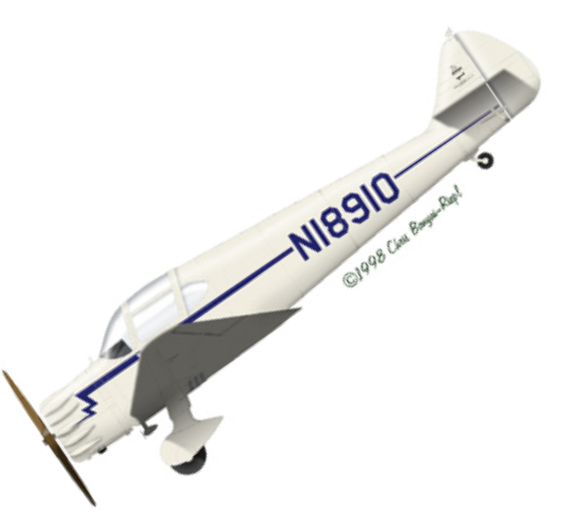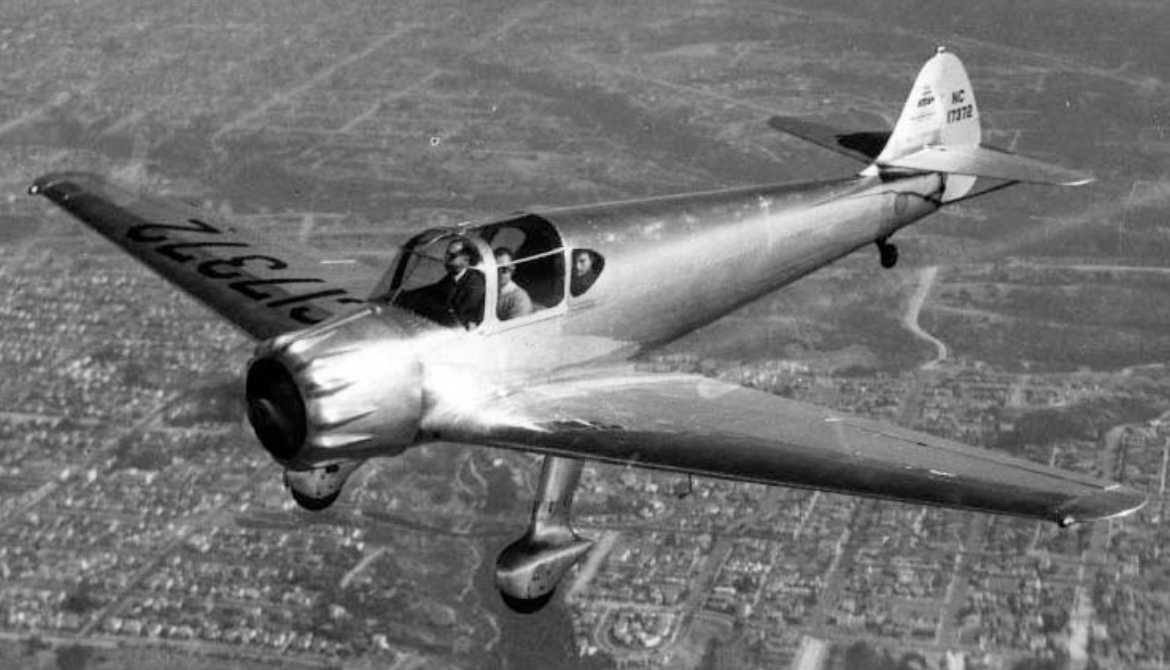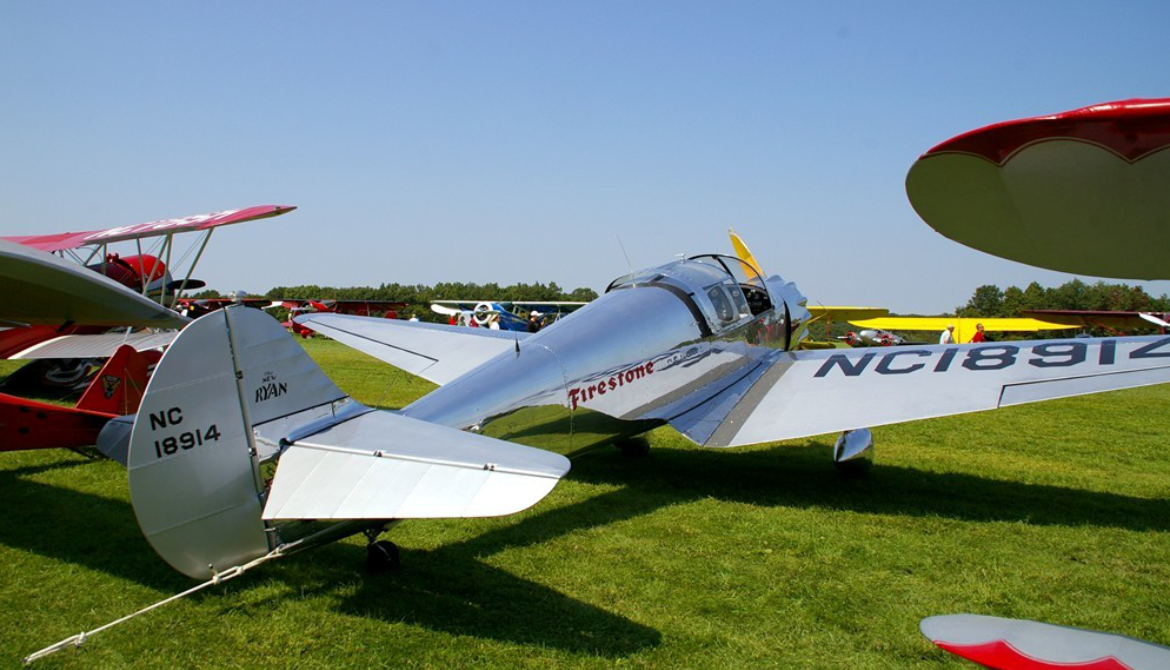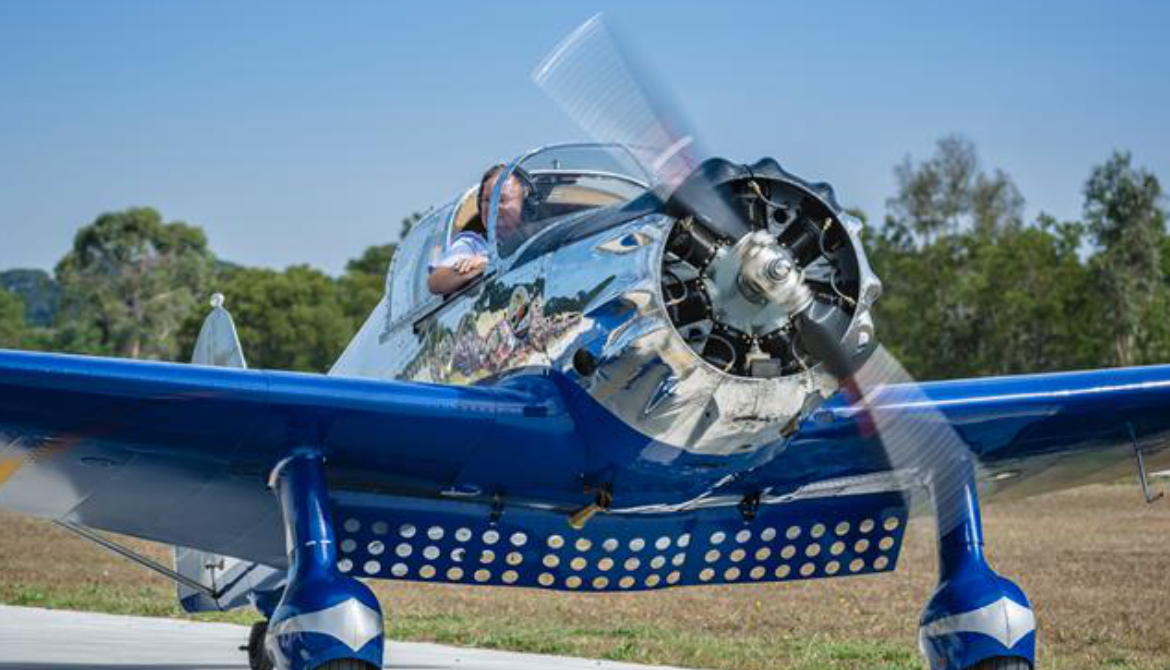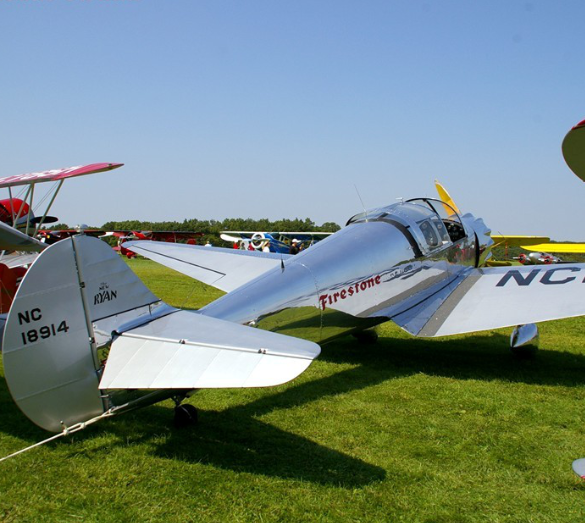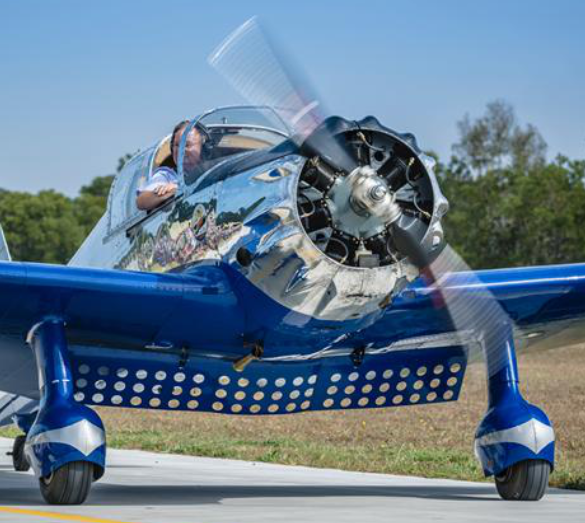Ryan S-C (Sports-Coupe)
or Sport Cabin
 |
|
| Ryan SCW-145 | |
| Role | Three-seat cabin monoplane |
|---|---|
| National origin | United States |
| Manufacturer | Ryan Aeronautical Company |
| First flight | 1937 |
| Number built | 13 |
.
History Ryan Aeronautical Company
Ryan S-C (Sports-Coupe)First flight 1937
Number built 13

The Ryan S-C (Sports-Coupe) (or Sport Cabin[1]) was an American three-seat cabin monoplane designed and built by the Ryan Aeronautical Company. At least one was impressed into service with the United States Army Air Forces as the L-10.
The Ryan S-C was a low-wing cantilever monoplane with a fixed tailwheel landing gear, designed to be an up-market version of the Ryan S-T trainer. The prototype first flew in 1937, and had a nose-mounted 150 hp (112 kW) Menasco inline piston engine. Production aircraft were fitted with a 145 hp (108 kW) Warner Super Scarab radial engine. With the company's involvement in producing trainer aircraft for the United States military, the S-C was not seriously marketed, and only 11 complete SCs (s/n 202 through 212) were built, 
Variants
- S-C later S-C-M
- Prototype powered by a 150hp (112kW) Menasco C4S inline engine, one built later converted to S-C-W.
- S-C-W
- Production aircraft powered by a 145hp (108kW) Warner Super Scarab radial engine, 12 built.
- L-10
- United States Army Air Forces designation for one S-C-W impressed into service in 1942, it was disposed of in November 1944.
- Later Modifications
- Two SC-Ws exist with a horizontally opposed 6-cylinder Continental engine. One was modified from a radial-powered SC-W, and one was built with the 6-cylinder engine after WWII using spare airframe parts from the original pre-WWII production run.
0
KmCeiling
0
KmCombat RANGE
0
Km/hAircraft Speed
0
Max Crew
Photo Gallery
Ryan Aeronautical Company
Ryan S-C (Sports-Coupe)


Ryan Aeronautical Company
Ryan S-C (Sports-Coupe)
General Info
-
-
- Crew: 1
- Capacity: 2 passengers
- Length: 25 ft 4+1⁄2 in (7.734 m)
- Wingspan: 37 ft 6 in (11.43 m)
- Height: 6 ft 10 in (2.08 m)
-
Powerplant
-
- Wing area: 202.0 sq ft (18.77 m2)
- Empty weight: 1,345 lb (610 kg)
- Gross weight: 2,150 lb (975 kg)
- Powerplant: 1 × Warner Super Scarab radial engine, 145 hp (108 kW)
-
Performance
- Maximum speed: 240 km/h, sea level
- Cruise speed: 135 mph (217 km/h, 117 kn) at 8,500 ft (2,600 m)
- Stall speed: 45 mph (72 km/h, 39 kn)
- Range:(845 km, 456 nmi)
- Service ceiling: (5,200 m)
- Rate of climb: 900 ft/min (4.6 m/s)
Armament
-
- None
Links to Youtube & Others
After the barnstorming era of the 1920's, general sport aviation became very popular. In the 1930's the success of the Ryan ST Sport Trainer led Claude Ryan on to build something for the general aviator that was starting to take to the skies. With more family flying taking place, Ryan decided that an enclosed cockpit would be the way to go, and set about designing a three to four place aircraft.
Ryan S-C (Sports-Coupe)
The Ryan S-C (Sports-Coupe) (or Sport Cabin[1]) was an American three-seat cabin monoplane
Youtube Link
At the start of the 21st Century, four examples were still airworthy in the United States.
